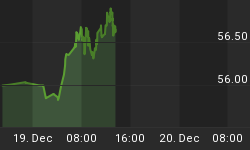Based on the January 2014 Market Overview report.
After the announced "tapering" all the doubts were centered around the question, how big the "tapering" is. All trails lead us to speculation about how the so-called backing out could influence the market in the long run. First let us illustrate all the different versions of Quantitative and Qualitative Easings (episode 1, episode 2, episode 3...) that happened since 2009. Here is a graph that you're already familiar with, depicting an immense growth in the balance sheet of the Federal Reserve since 2009. Contrary to graphs presented previously in the Market Overview, which summed up government securities and mortgage backed securities bought by the Federal Reserve and presented them in total:

Almost four trillion dollars in printing has occurred since the beginning of the crises. Naturally many mainstream economists could object and will comfortably argue that it is not really printing, but merely "stimulating". Since we are not cranking up the press and we are not literally handing out the money to people, there is no real printing going on. If there was, the hyperinflationary bomb would probably kill the economy. Rather than that the money is created for the sole purpose of bidding up the prices of various assets (government and bank friends). Surely this is not the usual printing one could expect in Zimbabwe, but this does not change the fact that money is being created in order to sustain various financial beneficiaries associated with the current fiat money order. And this fact alone cannot be omitted.
Four trillion printing/bidding is a big thing, especially in light of the fact that before 2009 the Fed held no mortgage-backed securities, but mostly government bonds (in much, much smaller amounts than right now). Here lies the bailout aspect of the whole mechanism - a certain cocooned part of the financial market is being subsidized. In the case of the government the subsidizing is directed at all government benefactors, whereas in the case of MBS we have obvious crony capitalism at work.
Setting this issue aside, let us stipulate what exactly this taperie is all about. The tapering is not with the big "T", not as many saw it. Is it a big cut, reversal, backing out from the previous expansionary policies? The buying program is still firmly in place and looks as expansionary as before. Actually it is more expansionary than it was in the significant part of the years 2011 and 2012, when the balance sheet was frozen.
We cannot therefore really debate how the change should affect the overall the economy simply because... There is no significant change at all.
Thank you.
The above is a small excerpt from our latest Market Overview report. If you would like to learn more about tapering, Fed's approach, general trends in the monetary policies that affect virtually every market, I invite you to subscribe to my monthly Market Overview report.















